In the depths of the Amazon, Brazil is building an otherworldly structure — a complex of towers arrayed in six rings poised to spray mists of carbon dioxide into the rainforest — but the reason is utterly terrestrial: To understand how the world’s largest tropical forest responds to climate change.
Dubbed AmazonFACE, the project would probe the forest’s remarkable ability to sequester carbon dioxide, which it is hoped would help scientists understand whether the region has a tipping point that could throw it into a state of irreversible decline.
Such an event, also known as the Amazon forest dieback, would transform the world’s most biodiverse forest into a drier savannah-like landscape.
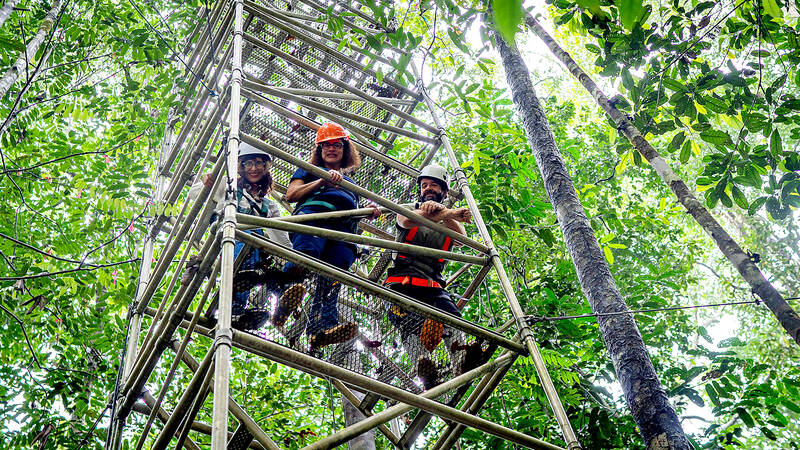
Photo: Reuters
FACE stands for Free Air Carbon Dioxide Enrichment. The technology, first developed by the Brookhaven National Laboratory in New York, has the ability to modify the surrounding environment of growing plants in a way that replicates different levels of atmospheric carbon dioxide concentrations.
“Plants absorb carbon dioxide along with water and light to produce sugars and release oxygen. What happens when one increases this input? We don’t know,” said David Lapola, one of the leading scientists of the project. “We have evidence from similar experiments in temperate forests, but there is no guarantee that the behavior will be the same here in the Amazon.”
Lapola, a professor at the State University of Campinas, said that the tipping point of the Amazon rainforest is more likely tied to climate change rather than the rate of deforestation.
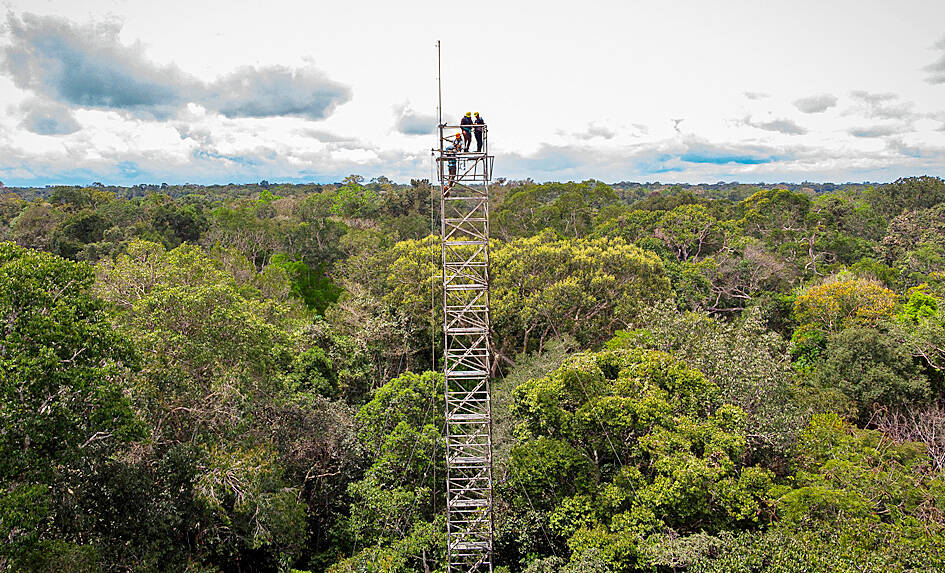
Photo: EPA-EFE
Thus, it is crucial to study the impact of higher concentrations of carbon dioxide in the forest to understand what lies ahead, he said.
This perspective challenges a widely quoted study by Earth system scientist Carlos Nobre, who wrote that if deforestation reaches a critical threshold of 20 to 25 percent across the Amazon, the balance of the region’s rainfall system would be disrupted, leading to the transformation of the lush rainforest into a savannah.
“Even if we halted deforestation in the Amazon basin today, the forest would still be at risk of experiencing the consequences of a tipping point due to climate change,” Lapola said. “While stopping deforestation remains our primary responsibility, combating the climate change driven by atmospheric factors is not something that Brazil or other Amazonian countries can address alone.”
The construction of the initial two rings is under way and they are expected to be operational by early August. Each ring would consist of 16 aluminum towers as high as a 12-story building. The carbon dioxide would be supplied by three companies to avoid shortages.
Situated 70km north of Manaus, the project is led by the Brazilian National Institute for Amazon Research, a federal institution, with financial support from the British government, which has pledged US$9 million. It should be fully operational by the middle of next year.
Luciana Gatti, an atmospheric chemist, praised the initiative and said it would be highly beneficial to replicate the project in the four quadrants of the Amazon, as the carbon absorption capacity varies significantly across the region.
Gatti, who is not directly involved with AmazonFACE, coauthored a study published in the journal Nature that said the eastern Amazon has ceased to function as a carbon sink, or absorber for the Earth, and has transitioned into a carbon source.
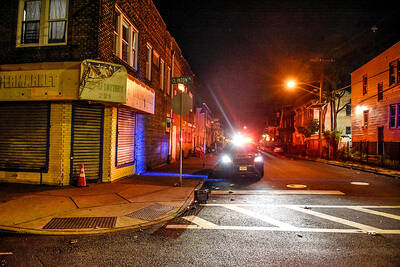
DOUBLE-MURDER CASE: The officer told the dispatcher he would check the locations of the callers, but instead headed to a pizzeria, remaining there for about an hour A New Jersey officer has been charged with misconduct after prosecutors said he did not quickly respond to and properly investigate reports of a shooting that turned out to be a double murder, instead allegedly stopping at an ATM and pizzeria. Franklin Township Police Sergeant Kevin Bollaro was the on-duty officer on the evening of Aug. 1, when police received 911 calls reporting gunshots and screaming in Pittstown, about 96km from Manhattan in central New Jersey, Hunterdon County Prosecutor Renee Robeson’s office said. However, rather than responding immediately, prosecutors said GPS data and surveillance video showed Bollaro drove about 3km
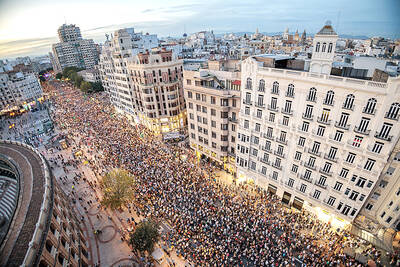
Tens of thousands of people on Saturday took to the streets of Spain’s eastern city of Valencia to mark the first anniversary of floods that killed 229 people and to denounce the handling of the disaster. Demonstrators, many carrying photos of the victims, called on regional government head Carlos Mazon to resign over what they said was the slow response to one of Europe’s deadliest natural disasters in decades. “People are still really angry,” said Rosa Cerros, a 42-year-old government worker who took part with her husband and two young daughters. “Why weren’t people evacuated? Its incomprehensible,” she said. Mazon’s

‘MOTHER’ OF THAILAND: In her glamorous heyday in the 1960s, former Thai queen Sirikit mingled with US presidents and superstars such as Elvis Presley The year-long funeral ceremony of former Thai queen Sirikit started yesterday, with grieving royalists set to salute the procession bringing her body to lie in state at Bangkok’s Grand Palace. Members of the royal family are venerated in Thailand, treated by many as semi-divine figures, and lavished with glowing media coverage and gold-adorned portraits hanging in public spaces and private homes nationwide. Sirikit, the mother of Thai King Vajiralongkorn and widow of the nation’s longest-reigning monarch, died late on Friday at the age of 93. Black-and-white tributes to the royal matriarch are being beamed onto towering digital advertizing billboards, on
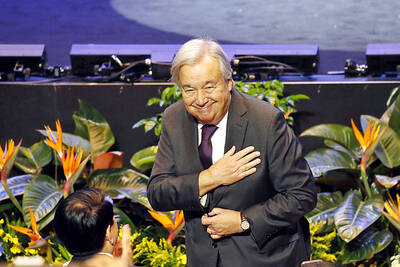
POWER ABUSE WORRY: Some people warned that the broad language of the treaty could lead to overreach by authorities and enable the repression of government critics Countries signed their first UN treaty targeting cybercrime in Hanoi yesterday, despite opposition from an unlikely band of tech companies and rights groups warning of expanded state surveillance. The new global legal framework aims to bolster international cooperation to fight digital crimes, from child pornography to transnational cyberscams and money laundering. More than 60 countries signed the declaration, which means it would go into force once ratified by those states. UN Secretary-General Antonio Guterres described the signing as an “important milestone,” and that it was “only the beginning.” “Every day, sophisticated scams destroy families, steal migrants and drain billions of dollars from our economy...